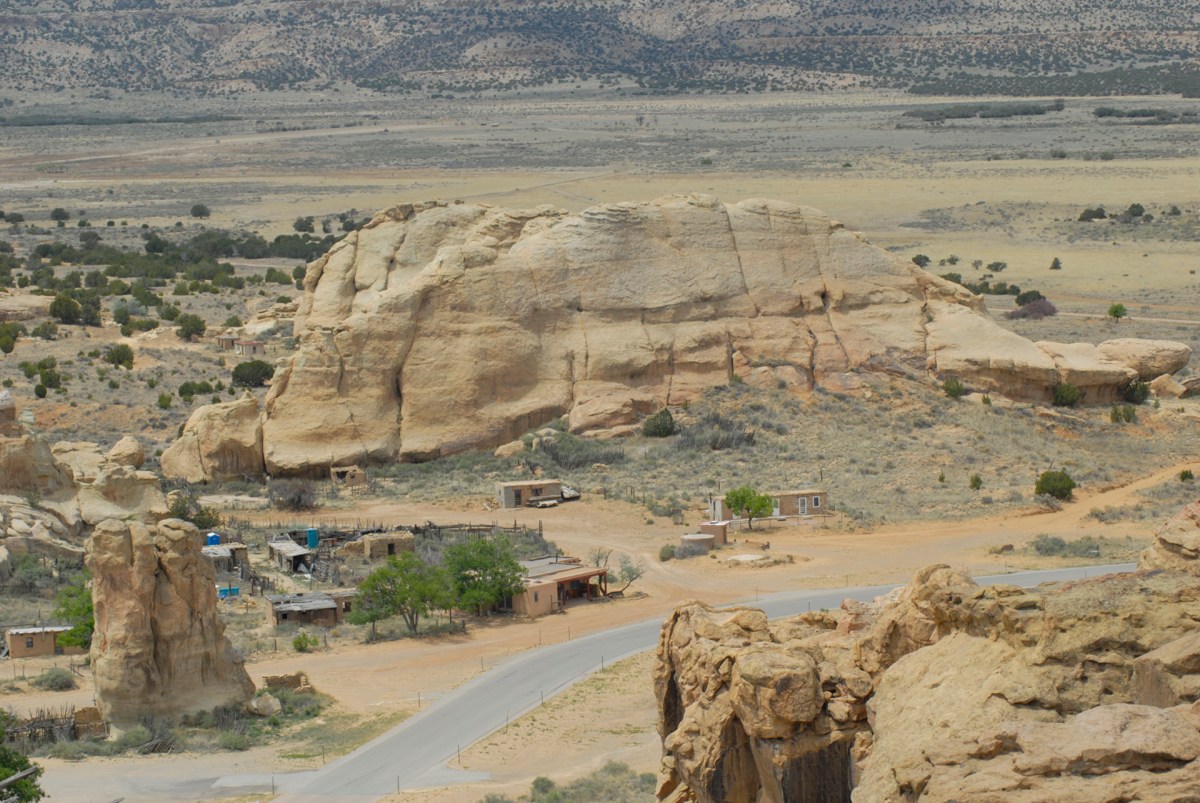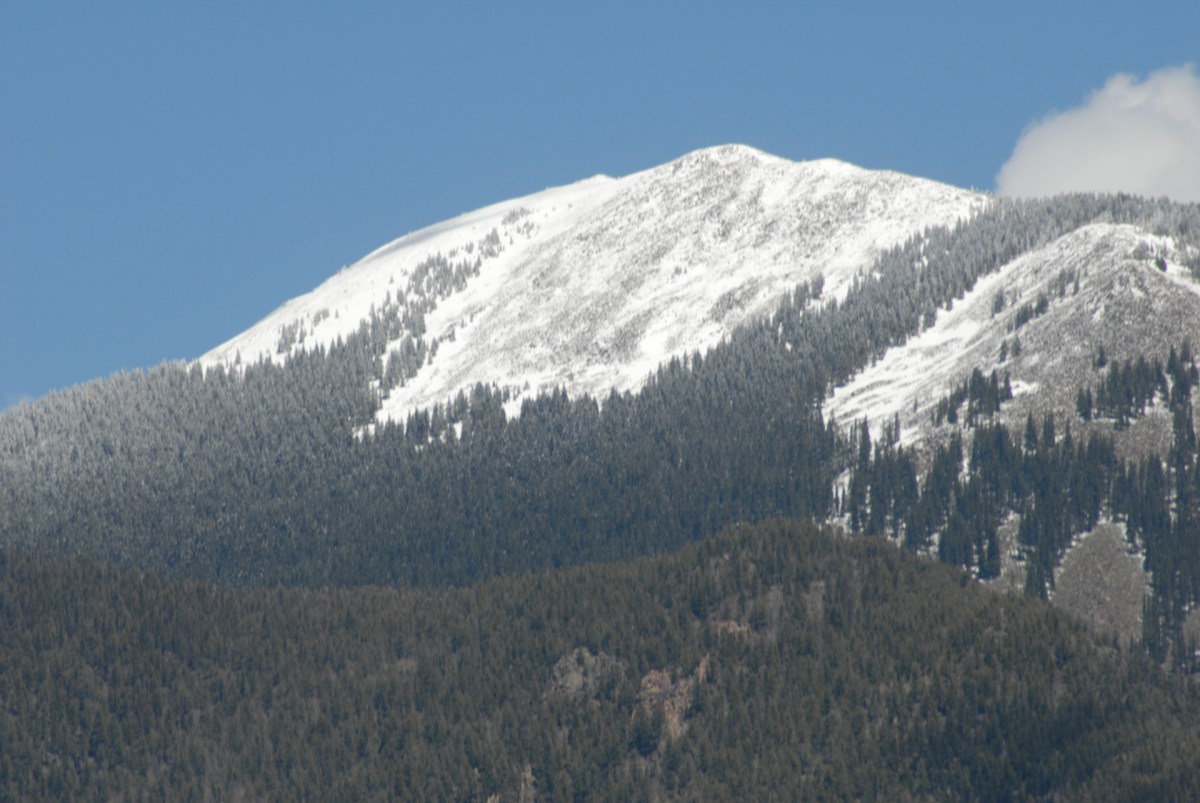A Tale Of Two Pueblos

Between Acoma and Taos stretch centuries of Native American history

The Pueblo of Acoma is a place its inhabitants rightly call Sky City — the altitude is 6440 feet above sea level. We reached it on a sunny May day, in the afternoon. All visits begin in the Sky City Cultural Center and Haak’u Museum, gateway to Acoma Pueblo, where you join a guided tour — a trip back into the history of New Mexico itself. Our able and affable guide, Robert, met us in the cultural center and took us to the bus that would take us on a road that wound its way up to the top of Acoma’s 367-foot sandstone bluff.
Acoma Pueblo is the oldest continuously inhabited settlement in North America, and in 1970 it was placed on the National Register of Historic Places, and in 2005, its church was named a National Trust Historic Site, the first Native American site ever so honored.
The views from Acoma Pueblo are stunning. Towering rock formations, sacred to the people who first populated the bluff in 1150 and the spiritual leaders that live on the mesa today, surround it. The nearly one-mile tour gives you ample opportunity to gaze around you at the vast New Mexico landscape and the blue sky and white billowy clouds above it.
The mesa-top settlement is known worldwide for its rich culture. Today, many Pueblo people still live in Sky City and nearby villages. While few of them actually live high up in the sky, they return from near or far for special cultural occasions, celebrating the ages-old rituals of Native American life at their ancestral homes.
Acoma pottery is also famed worldwide, and we even see it frequently on “Antiques Roadshow.” The thin-walled pottery with its characteristic black-and-white accents is still fired in wood-burning ovens and is widely acclaimed for its beauty and quality craftsmanship. Many of the potters were scattered around the mesa, with their beautiful pottery available for sale. One small seed pot and a tiny cat now hold a pride-of-place spot in our dining room.
That night we drove the 60 miles back to our very enjoyable hotel in Albuquerque — the well-named Nativo Lodge, where we dined on tasty Southwestern food in their Spirit Winds Café that night, too tired to head out to another spot. We also spent a few “happy hours” in the adjacent bar. Terrific margaritas!
Next? Taos Pueblo. It’s also an ancient pueblo, with the main part of its very large and grand buildings constructed between approximately 1000 and 1450 AD. Today, they look much as they did when the first Spanish explorers arrived in northern New Mexico in 1540. Native Americans have lived here for centuries — a peace-loving, democratic society that has maintained its history, culture, dress, and way of life over time.
Oddly, research claims that, like Acoma, Taos is considered to be the oldest continuously inhabited community in the U.S. Can it be Acoma holds the record for the entire continent, without including the U.S.? Odd, indeed. A conundrum for historians.
Taos today is perhaps better known for things other than its ancient pueblo. Maybe it’s the light or the altitude or the endless blue sky filled with astonishingly white clouds. Whatever it is, Taos is a mecca for artists. An art colony like no other, Taos has inspired artists as long as there has been creativity. From rock art on canyon walls to pottery of the Pueblo people, from the Taos Society of Artists to artists working today, Taos has long moved people to pick up whatever tool helped them express appreciation for living in this magnificent place.
Joseph Henry Sharp began a noted gathering of artists in Taos in 1893, and was joined by Ernest Blumenschein and Bert Phillips in 1898. Blumenschein described his first view of Taos: “The month was September, and the fertile valley a beautiful sight, and inspiration for those who ply the brush for happiness.”
In 1915, Sharp, Blumenschein, Phillips, Irving Couse, Oscar Berninghaus, and W. Herbert Dunton formed the Taos Society of Artists and became famously known as the Taos Six. Their first exhibition was held at Santa Fe’s Palace of the Governors soon after, and by 1917 the Taos Six were sending travelling exhibits of their work across the United States. And today, their work is featured in the many art galleries and museums that proliferate in this beautiful place. These meccas of art are where we spent several awe-inspiring hours.
Find lots more photos at indyeastend.com. Visit our website at olddogsnewtrips.com, and we welcome your comments on our Facebook page — Old Dogs, New Trips.
olddogsnewtrips@gmail.com























